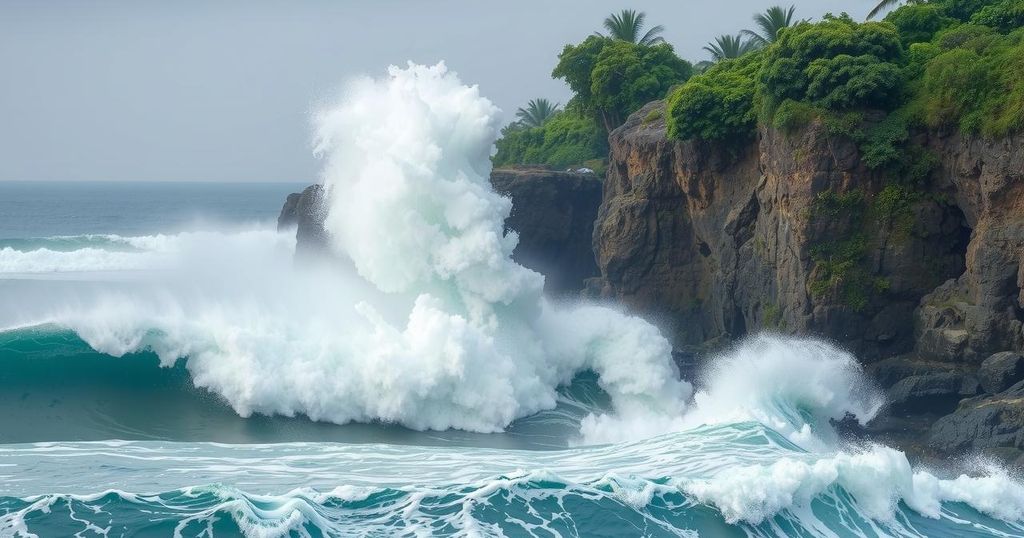Devastating Waves Hit Ecuador and Peru, Causing Port Closures and Fatalities

Severe waves of up to 13 feet have battered the coasts of Ecuador and Peru, resulting in at least two deaths and the closure of numerous ports. Authorities warn of similar future events, attributing the phenomenon to climate change. Many fishermen have lost their boats and livelihoods due to the hazardous conditions, with rescues underway for those stranded at sea.
Severe weather has struck the coasts of Ecuador and Peru as waves reaching heights of up to 13 feet (four meters) inundate the region, resulting in the closure of numerous ports and the unfortunate demise of at least two individuals. Jorge Carillo, Ecuador’s secretary for risk management, characterized the situation as an “extreme event,” cautioning the public about the potential for similar incidents in the future. Reports indicate that both fatalities occurred in the southwestern area of Manta, Ecuador.
In Peru, the ongoing onslaught of the waves has led to the closure of nearly all ports, as confirmed by Enrique Varea, the head of the navy’s Oceanographic Department. He anticipated that the high waves would persist in the immediate future, albeit with a likelihood of subsiding slightly from Monday onwards, with a return to normalcy expected in early January. Larry Linch, head of the Civil Defense unit in Callao, Peru, attributed these unusual wave patterns to climate change, underscoring the significant environmental factors at play.
Images shown by local media depict considerable flooding along the jetties and public squares in several areas of Peru, compelling residents to seek refuge at higher elevations. The Peruvian navy noted that current surges are originating from wind patterns off the U.S. coast, affecting many of the northern and central beaches. Fishing operations have faced severe disruptions, with numerous vessels reportedly damaged and many fishermen unable to take to the sea due to the hazardous conditions. A local fisherman lamented, “We need help from authorities. Here, we’ve lost some 100 boats.”
Amid these challenges, the Peruvian navy has successfully rescued thirty-one fishermen stranded in the tumultuous waters, although it remains unclear how many others may still be trapped at sea. The impact has also been felt beyond Peru, as significant wave activity was reported along the Chilean coast, raising alarm among authorities there. According to La Cruz district mayor Roberto Carrillo Zavala, after assessing the damage, the fisherfolk have been the most severely affected, emphasizing the economic repercussions that the situation may entail.
The phenomenon, which began on Christmas Day, is forecasted to continue impacting the region until January 1, according to the National Emergency Operations Center of Peru.
The coastal regions of Ecuador and Peru have been experiencing significant wave activity, a phenomenon exacerbated by changing climate conditions. This recent event has raised concerns about the safety of coastal communities, the livelihood of fishermen, and the operational capacity of ports—integral to the economy of both countries. With a history of extreme weather events in the region, the current situation underscores the persistent volatility brought on by both natural causes and human-induced climate changes.
In conclusion, the extreme wave activity experienced along the coasts of Ecuador and Peru has led to tragic fatalities, substantial port closures, and considerable economic distress, particularly impacting fishing communities. As authorities continue to respond to this natural disaster, the conversation around climate change and its implications for future weather phenomena is becoming increasingly urgent. The affected regions are bracing for ongoing challenges as they navigate the aftermath of this severe weather event.
Original Source: www.elpasoinc.com








